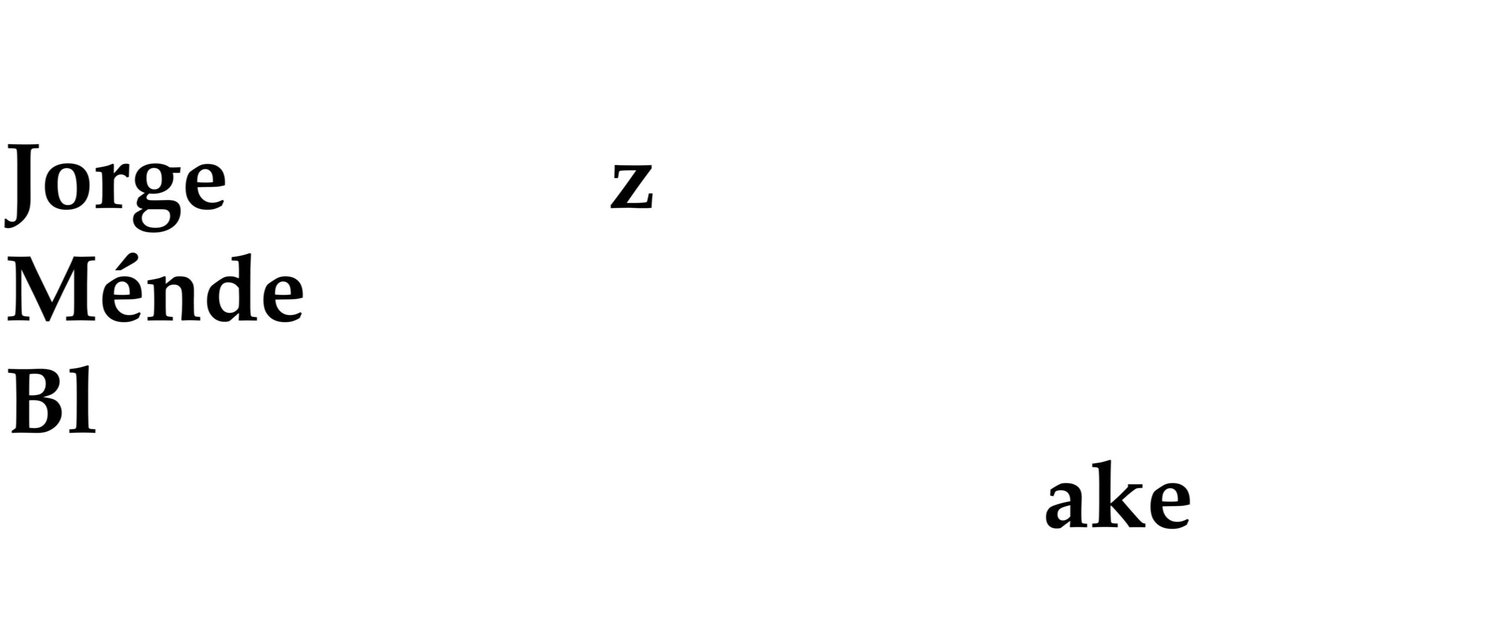For English Scroll Down
Nothing is Left to Tell - Jorge Méndez Blake
Jorge Méndez Blake profundiza su investigación sobre la literatura y las complejidades del lenguaje al centrarse en el escritor irlandés Samuel Beckett (1906-1989), ganador del Premio Nobel de Literatura en 1969. El artista mexicano basó su investigación en el obra corta Ohio Impromptu que Contiene algunos de los principales temas de Beckett: el aislamiento, un vacío de comunicación, la dualidad, el rehacer de las palabras, la contemplación del vacío, la alusión a la muerte. Estos temas son reevaluados a lo largo de la exposición a través de diversos medios.
El gran dibujo de una cortina, el artificio teatral por excelencia, abre la cuestión de la representación: ¿qué mostrar / qué decir? ¿Qué ver? ¿A quién escuchar? La cortina es una máscara y despierta curiosidad. Otra cuestión proviene del espejo, que refleja y duplica. Este espejo, que se encuentra a menudo en la obra de Méndez Blake, se coloca sobre una mesa en forma cerrada. ¿La repetición lleva infinitamente a la demencia o a una contemplación extática? ¿Cómo acercarse a la pareja, que se alude aquí a través de estas dos sillas al lado de cada mesa, sino también por el díptico fotográfico, visible desde una perspectiva precisa? ¿Qué decirle a la otra persona? El cuadro grande de la página final Ohio Impromptu, ampliado y dibujado en lápiz de color fino, sugiere que hay poco que pueda decirse con esta oración, reproducida en rojo, repetida sin cesar en toda la pieza: Nothing is Left to Tell. Un cierto vacío muy bien acentuado. El lenguaje también se sugiere repetidamente a través de una serie de trabajos en papel que reproducen las palabras Rideau / Cortina que corresponden a las palabras al final de las obras de Beckett. Evitando todo el texto, Méndez Blake crea una alusión fina a la extrañeza y la abstracción de la obra de Beckett. El lugar de las palabras y el color se eligen de acuerdo con una lógica precisa, como el diseño de la serie en sí (la apertura se convierte en una cortina invisible).
Usando una gran cortina de terciopelo oscuro separada en dos secciones, el artista instala un dispositivo teatral que abre y cierra la palabra hablada. Esto plantea la cuestión más general de la representación: dos grandes rectángulos negros pintados en la pared actúan como las sombras de la cortina y un sombrero de bronce hace eco al díptico fotográfico. Frente a esta oscuridad, ha esparcido cuatro grandes dibujos de flores que crecen cerca del estudio del artista en Guadalajara. Parecen ser dibujados en filigrana, visto a través de un velo (la cortina otra vez), rindiendo homenaje a los estados de ánimo más optimistas de Beckett; Se lee plenamente: "Voy a borrar todo, excepto las flores (...) Sólo los dos nos quedamos en las flores".
Nothing is Left to Tell - Jorge Méndez Blake
Jorge Méndez Blake deepens his research on literature and complexities of language by focusing on the Irish writer Samuel Beckett (1906-1989), winner of the Nobel Prize for Literature in 1969. The Mexican artist based his research on the very short play Ohio Impromptu which contains some of the major Beckett themes: isolation, a communication gap, duality, rehashing of words, contemplation of emptiness, allusion to death. These themes are re-assessed throughout the exhibition through various media.
The large drawing of a curtain, the theatrical artifice par excellence, opens the question of representation: what to show/what to say? What to watch? Who to listen to? The curtain is a mask and arouses curiosity. Another question comes from the mirror, which reflects and duplicates. This mirror, often found in Méndez Blake's work, is placed on a table in closed form. Does repeating infinitely lead to dementia or an ecstatic contemplation? How to approach the couple, which is alluded to here through these two chairs next to each table but also by the photographic diptych, visible from a precise perspective? What to say to the other person? The big picture of the final page Ohio Impromptu, enlarged and drawn in fine coloured pencil, suggests that there is little that can be said with this sentence, reproduced in red, endlessly repeated throughout the piece: Nothing is Left to Tell. A certain emptiness beautifully emphasised. Language is also suggested repeatedly through a series of works on paper reproducing the words Rideau / Curtain which correspond to the words at the end of Beckett’s plays. By avoiding all text, Méndez Blake creates a fine allusion to the strangeness and abstraction of Beckett's work. The place of words and colour are chosen according to a precise logic, like the layout of the series itself (the opening itself becoming an invisible curtain).
Using a large dark velvet curtain separated into two sections, the artist installs a theatrical device that opens and closes the spoken word. This raises the more general question of representation: two large black rectangles painted on the wall act as the shadows of the curtain and a bronze hat echoes the photographic diptych. Opposite this darkness, he has spread out four large drawings of flowers growing near the artist's studio in Guadalajara. They seem to be drawn in filigree, seen through a veil (the curtain again), paying homage to Beckett's most optimistic moods; one reads in Enough: "I'm going to erase everything except the flowers. (...) Just the two of us lingering in the flowers ".
